

Pros
- Looks seriously cool Better on-road than before
Cons
- Average fuel economy Still can’t entirely hide its agricultural nature
Here in the UK, the Toyota Land Cruiser has always felt a little like an ‘If you know, you know’ sort of car. With the existence of the new Land Rover Defender, the choice of off-roader for those who want to look like they occasionally tackle trials yet spend most of their time driving around Bicester, the Land Cruiser’s UK following is comparatively pretty niche.
Why is that the case? Well, despite being priced at a premium, the Toyota has always been quite agricultural to drive. That’s great for something you’ll actually look to conquer peaks and forests with, but given most UK buyers want the looks and capabilities of an off-roader without actually touching grass, it’s easy to see why the Japanese 4x4 isn’t often considered.
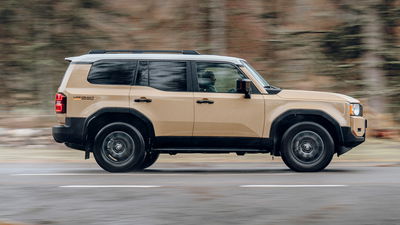
That’s something the new version of the iconic nameplate looks to rectify. Yes, it’s still a bonafide off-roader, but now with the promise of being a better car to live with on the tarmac. Does that bear true?
In some ways, yes. Given this is a car with a ladder-frame chassis rather than a monocoque and using passive springs rather than adaptive dampers, it’s surprisingly well refined. At a constant speed, road and wind noise isn’t all that overbearing, and while it is pretty wallowy, particularly on standard-fit all-terrain tyres, it’s not horribly so.
That, and it’s a comfortable place to sit. The seating position is commanding but doesn’t make you feel like you’re helming a tank, and those leather-wrapped, heated and ventilated places to put your buttocks are really comfortable to sink into.

You will begin to notice its vague, off-road nature as soon as you do anything that involves steering the Land Cruiser, though. Its huge turning circle makes it feel a little bigger than reality when you’re scooching around town, and very little in the way of confidence if you start helming it down a twisty road. Not that you’ll want to, given how much body roll it has – even with the roll bar electronically connected.
Other markets have adaptive dampers available as an option, which aren’t offered on European (and ultimately, UK) cars – something that may help to alleviate some of those problems.
Of course, the caveat to all of that is that the Toyota Land Cruiser is a car still primarily designed to conquer rough landscapes. Unfortunately for us, that test will have to wait another day – but it’s one we’re pretty excited to experience, and will likely forgive some of those shortcomings as a result.

For now, there’s only one engine available in the new Land Cruiser, a 2.8-litre four-cylinder diesel unit. That offers up 202bhp and 369lb ft of torque, sent through an eight-speed torque converter gearbox, and allows for 0-62mph to be covered in 10.9 seconds.
Slow? Yeah, but it doesn’t necessarily feel it. The low-end grunt feels pretty punchy, and that new gearbox is so much more responsive and decisive than the six-speed unit found in older examples.
Generally, it’s just easier to live with, though it still sounds much like a van and returned around 25mpg in our week with the car, so not amazing. It’s expected that a mild-hybrid version should arrive later this year, following its recent introduction to the Hilux.
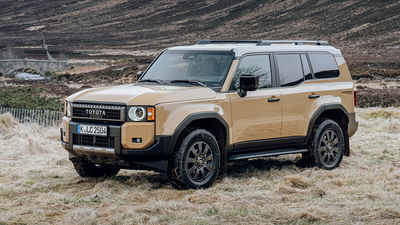
So less efficient than a Defender will be, and less appealing to use on the road. What’s the point, then?
Well, the Land Cruiser is simply just very, very cool, isn’t it? Just look at that 40-series-inspired bodywork, those round headlights and the big ‘TOYOTA’ lettering on our car. You can have those square if you’d like, but we prefer this retro-fest, to be honest.
It’s also a very pleasant and spacious place to be. Sure, the choice of an all-black interior isn’t too inspiring but everything feels remarkably well screwed together, big, chunky buttons are easy to use on the move and there’s loads of places to store things. Cooler box under the armrest? Perfect.
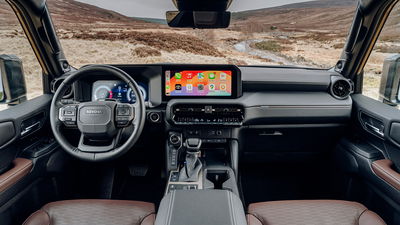
Regardless of how you spec your Toyota Land Cruiser, it’s going to come with a 12.3-inch infotainment system. Toyota’s software is pretty primitive, but it works flawlessly, and you can always plug your phone in for Android Auto and Apple CarPlay support instead. Our First Edition car also came with a gigantic panoramic sunroof, a brilliant 14-speaker audio system.
Unsurprisingly, there’s also shedloads of space in the back, so your rear passengers will be pretty pleased – especially once they discover the heated and cooled back seats.
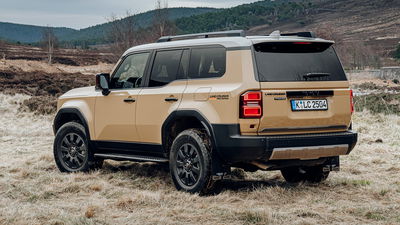
Without taking the Toyota Land Cruiser off-road, it’s impossible to give a definitive verdict. As a road car, though, you could find something more refined, sure, but then why would you buy a 4x4 in the first place?
If it’s to look cool, you’re really not going to do it better with a Defender than the Land Cruiser, really. Mostly because everyone else has the Land Rover, and you’re going to stand out.
Granted, doing so isn’t going to come cheap. Pricing starts at £77,845 and in the case of our First Edition test car, that’ll be £79,995. A Defender 110 starts considerably cheaper, though you’ll be paying about the same for a like-for-like spec.

The sensible option as a road car? No. But when was sensible any fun?
Stay tuned once we can finally get our hands with the Toyota in some rough stuff.
Get the latest car news, reviews and unmissable promotions from the team direct to your inbox
For more information see our Privacy Policy

Next
Cupra Formentor VZ TSI Review: Quick, Capable, But Lacking Emotion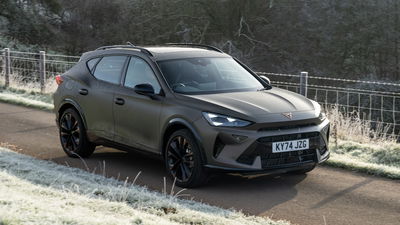
 Ryan Hirons
Ryan Hirons Ryan is Car Throttle's News and Features Editor, landing here in 2023. When he’s not writing cars, you’ll find Ryan pretending to drive them on Gran Turismo or playing with radio-controlled ones.
No comments found.
 News The New Porsche 911 GT3 Is The Fastest Manual Car At The Nürburgring
News The New Porsche 911 GT3 Is The Fastest Manual Car At The Nürburgring News Looks Like The Audi R8 Isn’t Coming Back After All
News Looks Like The Audi R8 Isn’t Coming Back After All News There’s A New Subaru Outback, But We Can’t Have It
News There’s A New Subaru Outback, But We Can’t Have It News The Subaru Trailseeker Is Basically An Electric Legacy Outback
News The Subaru Trailseeker Is Basically An Electric Legacy Outback News The Hennessey Venom F5 Has Somehow Gained Even More Power
News The Hennessey Venom F5 Has Somehow Gained Even More Power
Subscribe to our Newsletter
Get the latest car news, reviews and unmissable promotions from the team direct to your inbox
For more information see our Privacy Policy














